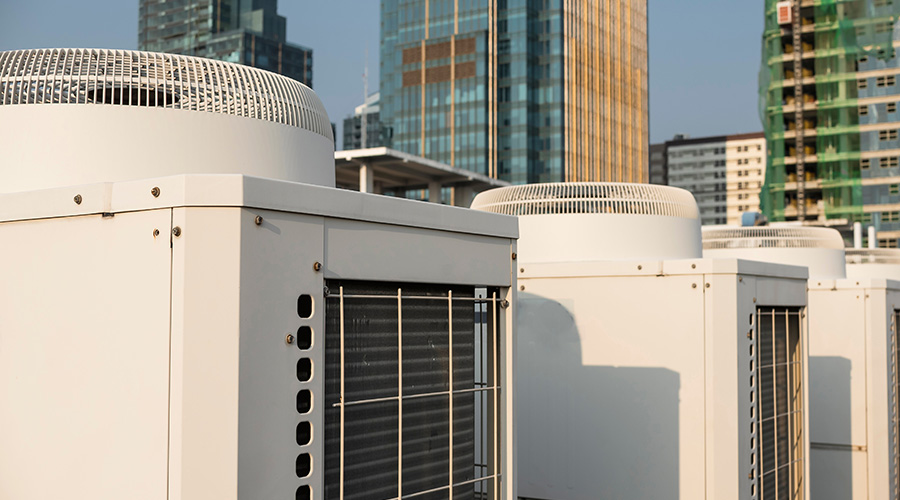Greening Up Restrooms
Many areas of facilities can benefit from efforts to become more environmentally friendly, but restrooms offer managers some of the biggest opportunities
The green movement has affected restrooms at least as much as it has other areas of facilities. Among the most intensively used areas in facilities, restrooms offer opportunities to reduce water use and improve health and hygiene.
By applying green thinking to restrooms, managers can take advantage of product advances designed to reduce materials, curtail water use, reduce negative affects from cleaning chemicals, encourage greener technologies and infrastructure, and otherwise improve facilities’ environmental friendliness.
Managers have three good reasons to focus green efforts on restrooms. While restrooms constitute a fraction of a building’s square footage, they consume a large portion of its cleaning materials: Restrooms use about 70 percent of chemicals and 90 percent of paper products. So the return on the investment in the form of environmental and health benefits is excellent.
Restrooms also are a logical place to begin because they play a prominent role in the image occupants get from a facility and organization. In addition, the investment to get started can be kept in check: Products are readily available and cost-competitive, relative to their traditional counterparts.
Chemical Considerations
Managers should select chemical cleaning products and processes for restrooms that reduce toxicity and the overall quantities of chemicals used. Managers in federal facilities should take an especially close look at products derived from renewable resources — corn, soy and citrus fruits, for example — as opposed to traditional products derived from nonrenewable resources, such as petroleum. Numerous types of such products exist.
For example, products made from non-pathogenic — not harmful — bacteria and enzymes that mimic the way nature cleans can replace caustic drain cleaners,.
Also, chlorinated grout cleaners and mold and mildew removers can burn eyes and skin, irritate lungs, and produce a poisonous gas when mixed with other cleaning chemicals. They can be replaced with hydrogen peroxide-based products or vapor-cleaning and pressure-washing systems.
Disinfectants that use chlorine or phenolic compounds create health and environmental concerns. Those products can be replaced with quaternary ammonium compounds and sanitizers using hydrogen peroxide. Specifying these products with a neutral pH makes them even safer.
Air fresheners often contain high levels of volatile organic compounds that contribute to poor indoor air quality and, ultimately, atmospheric smog. These products mask odor problems often caused by ineffective cleaning, drain-line and plumbing problems, and malfunctioning exhaust systems. Identifying and solving the cause of the problem is preferable to using air fresheners. If their use is unavoidable, do so only when and where necessary, as compared to using dispensers that work constantly.
Hand-soap Dispensers
Public-health experts say that if restroom visitors wash their hands just five times per day, the rate of illness could drop by 50 percent. So having a pleasant-smelling soap and a reliable dispenser is critical to encouraging hand-washing.
Bulk-fill dispensers, including wall and under- counter units, can reduce product packaging, but they require a thorough cleaning each month to prevent the spread of bacteria, which can grow in the dispenser.
Large cartridges reduce the amount of packaging and the need for numerous dispensers that hold multiple containers. They also allow visitors to use every ounce of soap before requiring replacement. Foaming hand soaps reduce the amount of soap used, and people enjoy using them.
Finally, hands-free dispensers that incorporate sensors are part of many touch-free restrooms. But because users wash their hands after touching the dispenser, such dispensers are perhaps less critical when compared to touch-free towel dispensers. If opting to use touch-free sensor equipment, be sure to carry green management principles through to the maintenance of the equipment by having a plan in place to recycle batteries.
Paper and Dispensers
Managers often can produce health and environmental benefits while reducing costs by rethinking their approach to specifying janitorial paper products, such as toilet tissue, hand towels and dispensers.
Performance varies widely with paper products. In the early years of the green movement, the only recycled paper products available were low-cost, low-quality, brown products made from cardboard.
Today, high-quality recycled products are available at competitive prices that can meet the needs of most occupants. Their recycled content varies widely. One popular approach is to specify products made with a high percentage of post-consumer recycled content, which helps build a more efficient infrastructure for recycling programs.
Bleaching of paper products historically has involved a chlorine-based product. Moving from elemental chlorine to chlorine dioxide and, finally, to paper processed without chlorine reduces the potential harmful effects of chlorine and its by-products entering the waste stream.
Dispensers for hand towels and toilet tissue can have a significant impact on the total amount of paper used and the associated environmental impacts. Larger rolls of paper are preferable to smaller rolls or multifold hand towels. Large rolls can reduce paper use by up to 30 percent. Multiple rolls in a toilet tissue dispenser eliminates the risk of replacing partial rolls too soon.
Limiting-type dispensers measure the amount of paper dispensed and, as a result, conserve paper. Hands-free dispensers eliminate cranks and levers that can transfer bacteria. Hand-towel dispensers can be manual — the user simply pulls on an exposed sheet of clean paper — or automatic, featuring sensors to dispense the sheet.
Electric hand dryers can be an alternative to paper hand towels. But a trade-off exists between the environmental benefits of eliminating paper and potential health problems caused when high-velocity air blows bacteria and contaminated water off the hands.
Equipment Issues
In buying more durable equipment for cleaning crews, managers can minimize the amount of equipment that crews use, as well as their environmental impacts. New, greener products also can replace some of the more hazardous chemicals.
For example, managers can replace mop buckets, wringers, and caddies with more durable tools and equipment, which reduces the impact from extracting raw materials, natural-resource consumption, pollution from manufacturing, and waste from product disposal.
Vapor and steam cleaning machines also can be excellent options for removing hard-water deposits and eliminating mold and mildew stains. Touch-free systems that combine high-pressure water and a wet vacuum use pressure to remove soils, eliminating several chemicals and saving time and money.
Plumbing Systems
Managers can specify the installation of automated valves on most existing plumbing fixtures, which will reduce water consumption and cross-contamination when people touch valves, handles and knobs. Again, be sure to have a plan to recycle batteries.
Finally, waterless urinals can help organizations save thousands of gallons of water per fixture. To ensure proper performance, managers should investigate the most appropriate applications and arrange for training in the products’ installation and cleaning.
Stephen Ashkin is the founder and president of the Ashkin Group, www.ashkingroup.com, a consulting firm working to green the cleaning industry. He has more than 25 years of experience and is the author of “Green Cleaning for Dummies.”
Related Topics:











